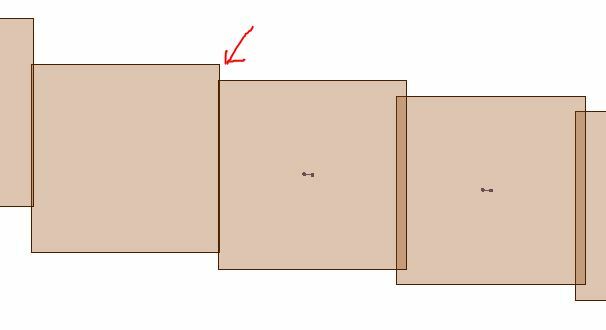Lets say I have locations of point/polygon features along a line and I would like to count the number of points along the line using a moving window. For instance I'd like to slide along the line using a window of 100 feet.
As I move along the line, I want a count the number of points within the 100 feet window until I reach the end.
Once the counts is done, I'd like to segment the line as well, based on the total counts within the 100 feet window.
Any ideas and help on this will be greatly appreciated.









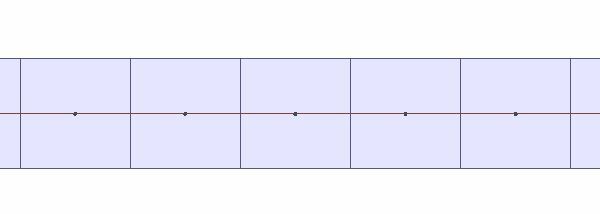 2 unit spacing with 1 unit box on any other line creates overlapping boxes. You need to increase the distance between vertices to make the box 100' from box to box.
2 unit spacing with 1 unit box on any other line creates overlapping boxes. You need to increase the distance between vertices to make the box 100' from box to box. 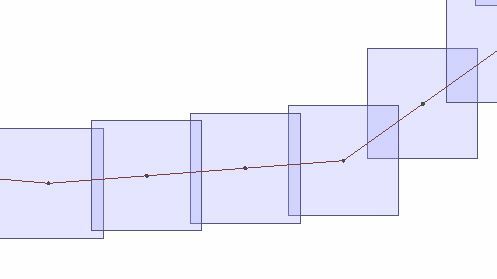
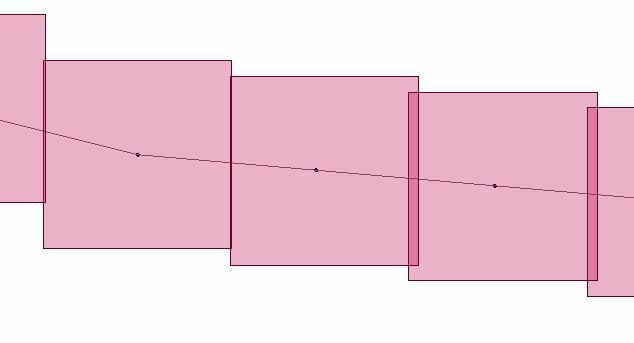 For each angle extend the segment by X units and generate nodes (see 2 dots in the center of each box) Notice the overlap on boxes 1 and 2.
For each angle extend the segment by X units and generate nodes (see 2 dots in the center of each box) Notice the overlap on boxes 1 and 2. 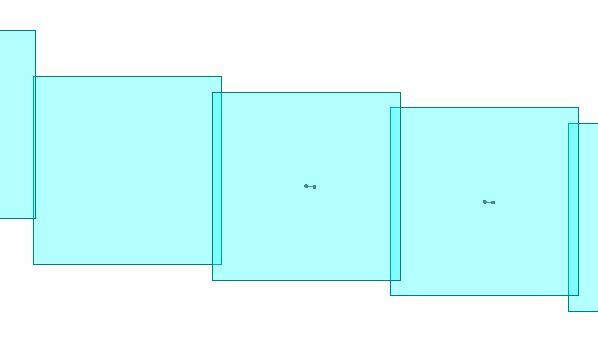 Using the new node create a new box. The gap goes away for box 1 and 2. Loop this through every feature and you will end up with a grid of evenly spaced boxes without overlap. They have to be handled one segment at a time and looped because the next box requires the previous segment joined together as a new segment for the next calculation.
Using the new node create a new box. The gap goes away for box 1 and 2. Loop this through every feature and you will end up with a grid of evenly spaced boxes without overlap. They have to be handled one segment at a time and looped because the next box requires the previous segment joined together as a new segment for the next calculation. 